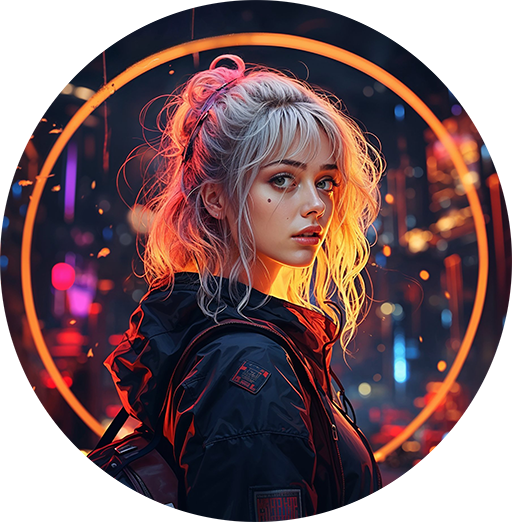Art-AI: Exploring the Uses of ChatGPT
As the intersection between art and artificial intelligence continues to evolve, ChatGPT emerges as a revolutionary AI language model that offers countless possibilities for creative minds. With its advanced capabilities, artists and individuals in the creative field can leverage the power of ChatGPT to elevate their work, streamline their processes, and unleash their full artistic potential.
Understanding ChatGPT
ChatGPT, developed by OpenAI, is a highly advanced language model based on the GPT-4 architecture, which utilizes reinforcement learning from human feedback (RLHF) for continuous improvement. This state-of-the-art technology allows ChatGPT to comprehend, generate, and engage in conversational dialogue, making it an invaluable tool for various applications across diverse industries, including the realm of art and creativity.
Expanding the Possibilities for Artists
- Enhanced Virtual Assistants: ChatGPT can be integrated into virtual assistants such as Siri, Alexa, or Google Assistant to offer more personalized and creative suggestions for artists. It can help with tasks like recommending color palettes, finding inspiration for new projects, or suggesting relevant art events and exhibitions.
- Improved Search Functionality: As a search engine tool, ChatGPT can provide artists with more intuitive, natural language-focused search results. This allows artists to explore art-related information, discover new techniques, and find resources for their projects more efficiently and effectively.
- Creative Content Generation: ChatGPT’s remarkable language generation capabilities enable it to craft engaging content such as blog posts, social media captions, and even descriptions for art pieces. This can help artists save time, generate ideas, and maintain a consistent online presence.
- Collaborative Artwork: Artists can harness ChatGPT’s language capabilities to create collaborative pieces, such as poetry or written narratives, that complement their visual art. The AI model can be used to develop unique stories or concepts, sparking new ideas and expanding the creative process.
- Educational Support: ChatGPT can be utilized as an educational tool, assisting artists in learning new techniques, understanding complex concepts, or exploring the history of art. With its ability to adapt and rephrase explanations based on user feedback, ChatGPT makes learning more engaging and personalized.
- Multilingual Assistance: ChatGPT’s proficiency in multiple languages enables artists to access a broader range of resources, translate their work for global audiences, or collaborate with international peers, thereby breaking down language barriers and expanding creative horizons.
- Coding Support: For artists working with digital mediums or exploring generative art, ChatGPT can provide assistance in writing and debugging code, analyzing security flaws, and crafting proof-of-concept demos. This support helps artists streamline their creative process and focus on the artistic aspects of their work.
ChatGPT’s versatility and advanced language capabilities open up a world of opportunities for artists in the realm of artificial intelligence. By leveraging ChatGPT’s potential, creative minds can revolutionize their art, engage with technology in unprecedented ways, and push the boundaries of human imagination.
Basic tutorial for using ChatGPT API
To use ChatGPT, you can input a natural language question or prompt and the model will generate a response. The input can be in the form of text, and the output will also be in text format.
You can use ChatGPT in various ways, including:
- Interfacing with an API: You can use the OpenAI API to integrate ChatGPT into your own applications or services.
- Using the OpenAI Playground: The OpenAI Playground allows you to test ChatGPT and other OpenAI models in a web-based interface.
- Implementing it on your own: You can also build your own implementation of ChatGPT using the OpenAI GPT-3 model.
Note: Access to the full version of ChatGPT may be limited and requires an API key from OpenAI.
Here is a basic tutorial for using ChatGPT, a large language model developed by OpenAI API:
- Go to the OpenAI website (https://openai.com/) and create an account.
- Once you have an account, you can access the OpenAI API and use it to interact with ChatGPT.
- You can use the API in different ways, one of them is to use it in a Jupyter notebook or in a python script. To do this, you will need to install the openai library. You can install it by running:
!pip install openai
Once you have the library installed, you can use the OpenAI API key to interact with ChatGPT. You can do this by setting the API key as an environment variable:
import openai_secret_manager
assert "openai" in openai_secret_manager.get_services()
secrets = openai_secret_manager.get_secrets("openai")
print(secrets)
To use ChatGPT, you can use the openai.Completion.create() function, which takes several parameters, such as the prompt (the text you want to generate a response for), the model (ChatGPT), and the API key.
Here is an example of how to use the openai.Completion.create() function to generate a response from ChatGPT:
import openai openai.api_key = secrets["api_key"] prompt = "What is the capital of France?" completions = openai.Completion.create( engine="text-davinci-002", prompt=prompt, max_tokens=1024, n=1, stop=None, temperature=0.5, ) message = completions.choices[0].text print(message)
This is a basic example of how to use ChatGPT, but you can also customize the model and the parameters to fit your needs. You can also use it in different ways, like creating a chatbot, a language translator and many other ways.
Please note that the key and the model may have been updated, but the process is similar.


